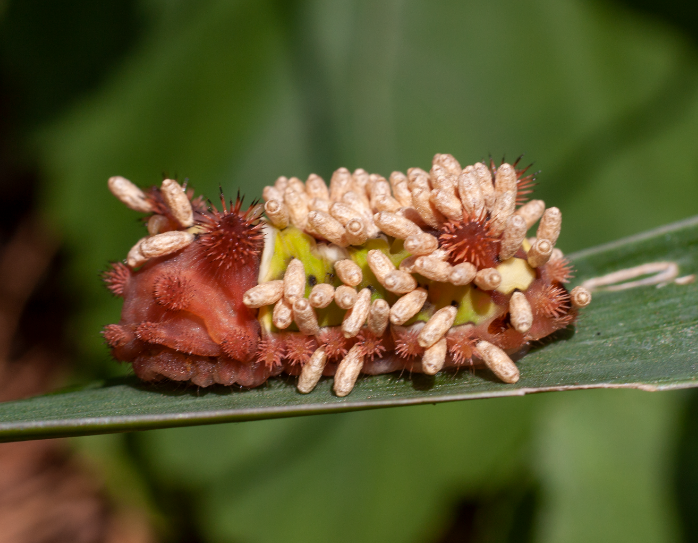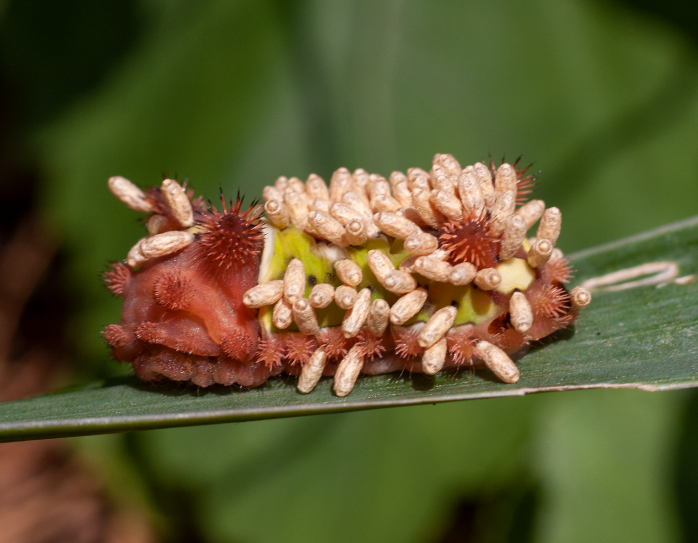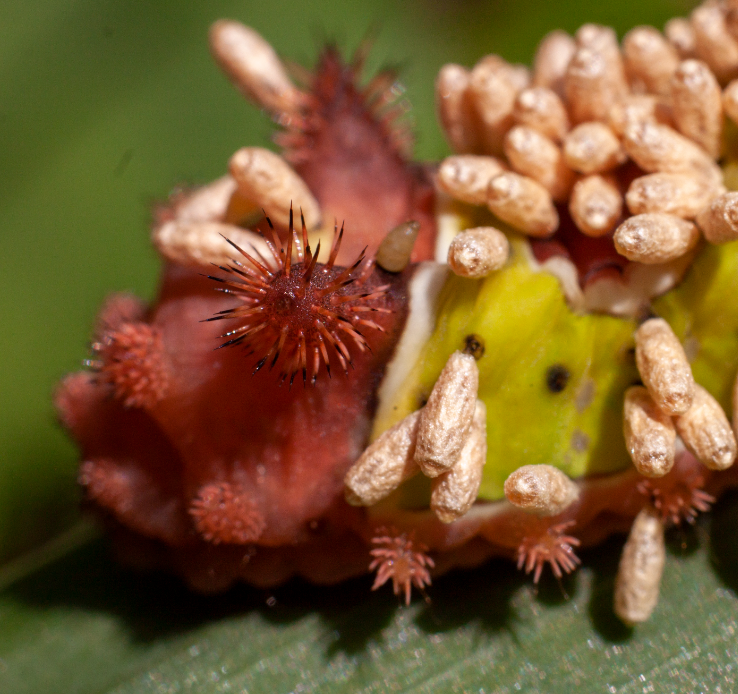Contributed by Luke Hearon, The John J. Willaman & Martha Haas Valentine Plant Protection Intern
The following story is courtesy of the Morris Arboreteum blog.
While not particularly rare in the eastern half of the U.S., the saddleback caterpillar (Acharia stimulea) has long been on my bug-seeing bucket list. I do wish I had encountered the caterpillar under different circumstances; the caterpillar came to my attention because our Propagation Intern, Emily Conn, accidentally touched it while doing garden work. When it meets your skin, the saddleback caterpillar is impossible to miss and not easy to forget. Those black-tipped bristles that adorn the insect are precisely the reason why this caterpillar wears its flashy green saddle. The spines bear a powerful venom, delivered on contact with the skin of a hapless passerby. The tips of the spines may break off within the skin, increasing the pain and duration of the sting. Already comparable to a wasp sting, if the spines cannot be removed, the burning pain intensifies and persists. It’s a potent reminder that the more striking the insect, the less readily it should be handled.
Of course there are another few dozen subjects of these photos: the parasites. The pale cocoons blanketing the caterpillar are the pupating young of a parasitoid wasp in the family Braconidae, and likely the genus Cotesia. A warning before I proceed: what follows is not for those who anthropomorphize caterpillars, nor for those who have recently eaten a meal. If you’re fond of the movie “Alien,” proceed.
While technically a type of parasite, the term “parasitoid” is essential to distinguish the modus operandi of these killers. As conventionally understood, a good parasite preserves its host. If your existence is dependent on the life of another, it seems to follow that you should take care not to kill that other. Insects have a clever way of circumventing this evolutionary law. The parasitic larvae indeed want the caterpillar to stay alive; the full grown adults, however, are indifferent. Once the larvae complete their development, the wellbeing of the host is irrelevant. A parasitoid does preserve its host, but only so long as it is using it. When the larvae are ready to pass into the next developmental stage, pupation (as pictured above), they chew their way from the inside of the insect to the surface, emerging en masse through its skin. Thus, the parasitoid inhabits the gruesome space between the conventional parasite, which never kills its host, and the conventional predator, which kills its prey relatively instantaneously. The parasitoid kills, and kills slowly.
As humans, the parasitoid concept may seem utterly alien, a thing out of fiction. The reality is, parasitoid wasps, flies, and even a few beetles represent a massive amount of terrestrial biodiversity. A recent speculative, but rigorous, paper gives a few calculations of the total number of parasitoid wasp species. Their conservative estimate? 833,590. Even if this titanic number were many times greater than the true diversity of parasitoid wasps, it has become increasingly obvious over the course of recent study in this field that these creatures are far more earthly than alien.











